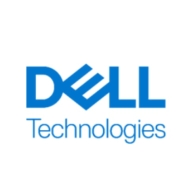


Dell PowerMax NVMe and Pavilion HyperParallel Flash Array are both top-tier storage solutions that compete in high-performance, enterprise storage systems. Dell PowerMax NVMe generally offers better pricing and support, making it more attractive in these areas.
Features: Dell PowerMax NVMe is praised for its high performance, scalability, and robust security features. Pavilion HyperParallel Flash Array stands out with its advanced parallel processing capabilities, greater flexibility, and superior data management functions.
Room for Improvement: Dell PowerMax NVMe users often point out the need for better integration capabilities, more intuitive management tools, and improved power efficiency. Pavilion HyperParallel Flash Array users suggest enhancements in power efficiency, reducing system complexity, and bettering customer support responsiveness.
Ease of Deployment and Customer Service: Dell PowerMax NVMe is noted for its straightforward deployment process and reliable customer service, which is highly valued by users. Pavilion HyperParallel Flash Array, while also easy to deploy, receives mixed reviews regarding customer support, with some users finding it less responsive.
Pricing and ROI: Dell PowerMax NVMe users appreciate its reasonable setup costs and solid ROI. Pavilion HyperParallel Flash Array, although initially more expensive, is viewed as delivering higher value over time due to its advanced capabilities. ROI for Pavilion is generally perceived to compensate for its higher upfront cost.


Pure Storage FlashArray//X is the world’s first enterprise-class, all-NVMe flash storage array. It represents a new class of storage – shared accelerated storage, which is a term coined by Gartner – that delivers major breakthroughs in performance, simplicity, and consolidation.
Dell PowerMax is the industry’s most secure mission-critical storage platform. With NVMe Dynamic Fabric technology, PowerMax breaks from traditional storage limitations, enabling seamless integration with cloud-native and legacy applications. Designed with a powerful scale-up and scale-out architecture, PowerMax supports mission-critical applications at scale with zero downtime and ultra-low latency. The latest PowerMaxOS 10 release harnesses AI-driven efficiencies for trusted performance, capacity, and security. By choosing PowerMax, you can trust in a secure, intelligent, and always modern storage solution that unlocks the full potential of your data to drive business success.
Pavilion HyperParallel Data Platform
The Pavilion HyperParallel Data Platform™ dramatically accelerates what organizations achieve by delivering universally unmatched storage performance, in an incredibly compact solution while reducing data center costs and complexity. Unrivaled flexibility for multiple data types and protocols, along with broad ecosystem integration, ensure that every customer has choice and control.
What is the Pavilion HyperParallel Data Platform
The Pavilion HyperParallel Data Platform is comprised of the Pavilion HyperParallel Flash Array™ and Pavilion HyperOS™. The Pavilion HyperParallel Flash Array leverages a unique, switch-based architecture to create a multi-controller solution that delivers an unmatched combination of high performance, ultra-low latency, and storage density. Pavilion HyperOS is a powerful, purpose-built storage operating system designed to unlock the power of the multi-controller Pavilion HyperParallel Flash Array, which delivers scalability and flexibility that no other solution can offer.
Pavilion HyperParallel Data Platform Data Sheet
Download the Pavilion HyperParallel Data Platform data sheet. Updated: December 2020
We monitor all NVMe All-Flash Storage Arrays reviews to prevent fraudulent reviews and keep review quality high. We do not post reviews by company employees or direct competitors. We validate each review for authenticity via cross-reference with LinkedIn, and personal follow-up with the reviewer when necessary.